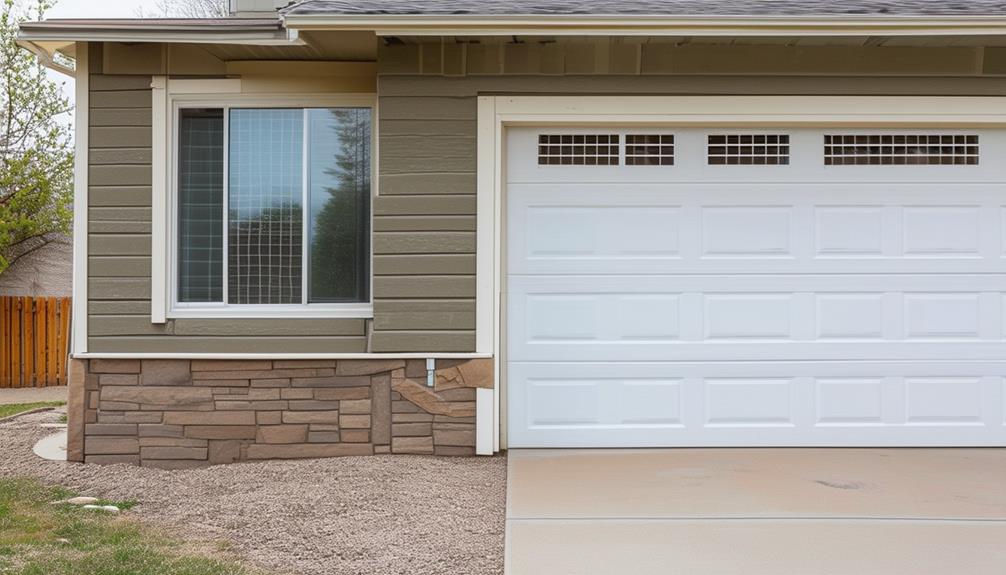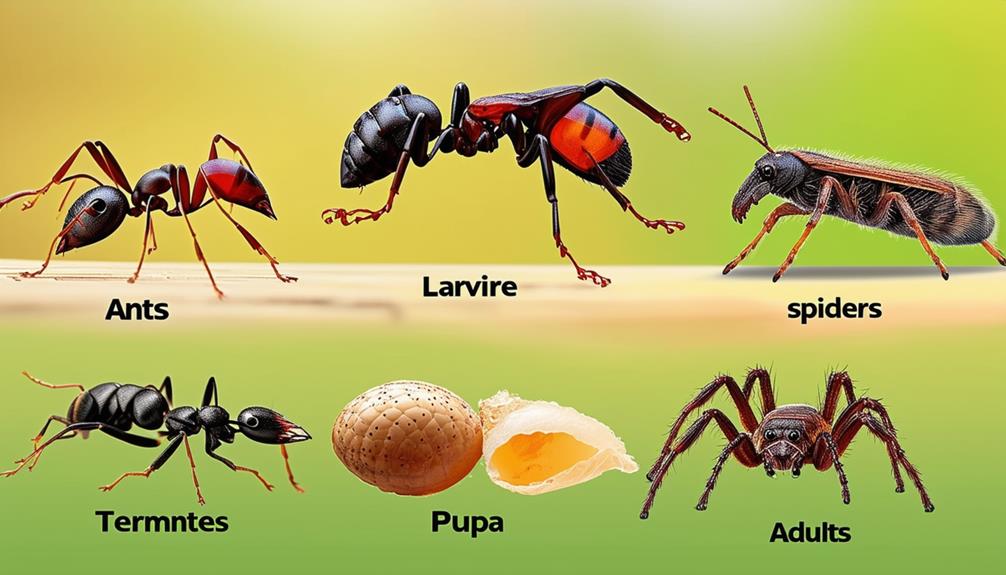When the spring season arrives in Utah, the increase in temperatures tends to encourage rodents to seek shelter in homes, making it essential to fortify your living space against these unwanted intruders. By following a few simple tips and taking proactive measures, you can effectively secure your home and prevent rodents from entering. From inspecting your home's exterior for potential entry points to utilizing natural deterrents and sealing off vulnerable areas, taking these steps can help safeguard your household from rodent infestations.
Key Takeaways
- Seal gaps around doors, windows, and utility entry points with silicone caulk.
- Use steel wool for larger gaps to prevent rodent access.
- Keep kitchen counters clean and food stored in airtight containers.
- Install door sweeps to block entry points and maintain energy efficiency.
- Inspect and seal attics, basements, and walls with rodent-proof materials regularly.
Exterior Inspection and Sealing Process
Begin by conducting a thorough exterior inspection of your home to identify and seal any potential entry points that rodents and other pests could exploit.
Walk around the perimeter of your home, paying close attention to areas where different materials meet, such as where siding meets the foundation or where pipes enter the house. Look for gaps around doors, windows, and utility entry points that may need sealing.
Check vents and chimneys to confirm they're properly sealed to prevent pests from finding their way inside. Rodents can squeeze through surprisingly small openings, so be meticulous in your inspection.
Using Silicone Caulk for Sealing
Inspecting your home's exterior for cracks and gaps is an important first step in the process of using silicone caulk for sealing against rodents and pests this spring.
Silicone caulk is a highly effective material for pest control as it creates a durable and flexible barrier that prevents unwanted intruders from entering your home.
By applying silicone caulk to areas where different materials meet, such as where pipes enter the house or where siding meets the foundation, you can create a waterproof and airtight seal that deters rodents and insects.
This type of caulk adheres well to various surfaces, ensuring a secure closure that's resistant to temperature changes and UV exposure.
Additionally, using silicone caulk for sealing can help you maintain energy efficiency in your home by reducing drafts and air leakage, ultimately saving you money on heating and cooling costs.
Make sure to choose a high-quality silicone caulk for long-lasting pest control and sealing benefits.
Implementing Preventative Measures
To effectively implement preventative measures against rodents in your home, start by sealing all gaps and crevices using materials like silicone caulk. Inspect the exterior of your property thoroughly for potential entry points that pests could exploit. Address any openings around doors, windows, and utility entry points that rodents could use to access your home. Make sure vents, chimneys, and other openings are properly sealed to keep rodents out.
Utilize steel wool to fill larger gaps and prevent rodents from entering through small holes in attics, basements, and crawl spaces. By sealing these entry points, you can greatly reduce the chances of rodents finding their way into your home. Remember that rodents are attracted to food sources, so keeping your kitchen counters clean, storing food in airtight containers, and promptly cleaning up any spills can also help deter them from entering your living space.
Taking these preventative measures will help create a rodent-free environment in your home this spring.
Maintaining Cleanliness Indoors
To maintain a clean indoor environment that deters rodents, make sure you promptly clean up any crumbs and spills to remove potential food sources. Additionally, regularly vacuum and mop floors to eliminate nesting materials that may attract pests.
Remember to store food in airtight containers, dispose of garbage in tightly sealed bins, and keep living spaces clutter-free to reduce hiding spots for rodents.
Clear Food Sources
Maintaining cleanliness indoors by storing food in airtight containers is crucial to eliminate easy access for rodents. To guarantee a rodent-free home, follow these practical tips:
- Clean Up Promptly: Wipe down kitchen counters and dining areas to avoid leaving behind crumbs and spills that can attract pests.
- Regular Maintenance: Vacuum and mop floors regularly to remove food particles that might interest rodents looking for a meal.
- Proper Waste Disposal: Dispose of garbage properly and keep trash cans tightly sealed to prevent odors from luring rodents into your home.
Seal Entry Points
Regularly inspecting and sealing entry points is essential in keeping rodents out of your home and maintaining cleanliness indoors.
To prevent pest intrusion, seal all gaps and cracks in walls, floors, and foundations using materials like steel wool or caulk for small openings. Be sure to check and seal gaps around doors, windows, and utility entry points, as well as attics, basements, and crawl spaces where rodents might gain access.
Additionally, properly seal vents, chimneys, and any other openings that pests could use to enter the home. By taking these proactive measures, you can effectively block rodent entry points and create a cleaner indoor environment free from unwanted pests.
Declutter Living Spaces
Declutter your living spaces to reduce hiding spots for rodents and create an environment less attractive to these pests. Here are three practical tips to help you maintain cleanliness indoors and deter rodents:
- Regular Cleaning: Implement a cleaning routine to keep your living spaces free of clutter, crumbs, and food debris that can attract rodents.
- Minimalism: Remove unnecessary items that serve as potential rodent habitats, such as old newspapers, cardboard boxes, and unused clothing.
- Storage Solutions: Invest in storage containers to organize belongings neatly, reducing the chances of rodents finding shelter in piles of items.
Using Natural Deterrents
To effectively deter rodents using natural methods, consider utilizing peppermint oil, vinegar sprays, mint plants, ammonia-soaked rags, and cloves or cloves oil around your home. Mice and rats are known to be repelled by the strong scent of peppermint oil, making it an effective natural deterrent.
You can create a vinegar spray to protect specific areas where rodents might try to enter your home. Planting mint around the perimeter of your house can act as a barrier to keep rodents away. Ammonia-soaked rags strategically placed can discourage rodents from nesting in those areas.
Additionally, cloves or cloves oil can be used to create a repellent barrier that rodents will avoid. By incorporating these natural deterrents, you can help keep rodents like mice and rats at bay, protecting your home from potential infestations.
Installing Door Sweeps for Protection
When safeguarding your home against rodents, consider installing door sweeps as an effective measure to block drafts and prevent pests from entering. Door sweeps are weatherstrips attached to the bottom of doors, designed to seal gaps between the door and the threshold.
Here are some tips for installing door sweeps:
- Choose the Right Material: Door sweeps come in various materials like rubber, vinyl, or aluminum. Select a material that suits your door type and provides the best protection against rodents.
- Proper Installation: Make certain the door sweep is correctly installed to effectively block any entry points for pests. Make sure it's snug against the door to prevent rodents from squeezing through gaps.
- Regular Maintenance: Check the condition of the door sweeps periodically and replace them if they show signs of wear and tear. Maintaining the door sweeps will ensure they continue to keep rodents out and maintain energy efficiency in your home.
Filling Gaps With Steel Wool
To further fortify your home against rodents after installing door sweeps, consider using steel wool to fill gaps as an additional measure to deter unwanted pests. Steel wool is an effective material for blocking larger openings where rodents could potentially enter your home. Its texture poses a challenge for rodents to chew through, making it a reliable barrier against these unwanted intruders. Focus on areas like walls, floors, and ceilings where mice and rats can easily squeeze through, and insulate these gaps with steel wool to prevent rodent access. Properly sealing these entry points with steel wool can greatly help in keeping your home rodent-free and secure.
| Advantages of Using Steel Wool |
|---|
| Effective deterrent against rodents |
| Difficult for rodents to chew through |
| Helps block entry points effectively |
Consider investing in steel wool to fortify your home and create a robust defense against rodents seeking shelter in your living spaces.
Proper Sealing of Attics and Basements
You need to make sure that all vents and openings in your attics and basements are properly sealed to keep rodents out.
Use materials like steel wool or mesh screens to cover any gaps or holes that could serve as entry points for rodents.
Check for cracks and crevices that rodents might exploit to gain access to your home.
Seal Attic Gaps
Attic gaps, when left unsealed, serve as inviting access points for rodents seeking shelter and nesting spaces in homes. To effectively seal attic gaps and keep rodents out, follow these essential steps:
- Inspect for Gaps: Regularly check your attic for any openings, including around pipes, vents, and the roofline, where rodents can enter.
- Use the Right Materials: Seal gaps with rodent-proof materials like steel wool, wire mesh, or caulk to guarantee durability and effectiveness.
- Pay Attention to Details: Don't overlook small holes or cracks; rodents can squeeze through tiny openings, so be thorough in your sealing efforts.
Inspect Basement Walls
Regularly inspecting basement walls for cracks and gaps is vital in effectively sealing off potential entry points for rodents in your home. Rodents can easily squeeze through small openings, so a thorough inspection is key to keeping them out.
Use steel wool or caulking to seal any openings along the basement walls to prevent rodent infestations. By properly sealing these entry points, you can maintain a pest-free environment in your home.
Remember that preventing rodent access to basements is essential in your overall efforts to keep them away. Stay vigilant and proactive in your inspection and sealing of basement walls to ensure a secure and rodent-free living space.
Frequently Asked Questions
How to Rodent Proof Your Home?
To rodent-proof your home, focus on pest exclusion by sealing gaps with silicone caulk and steel wool. Inspect for entry points around doors, windows, vents, and chimneys. Use weather stripping and check utility entryways for rodents.
What Keeps Rats Away Permanently?
To keep rats away permanently, focus on long-term solutions like sealing entry points with steel wool and eliminating food sources. Natural deterrents, such as door sweeps and repairing screens, also help. Regular inspections maintain a rat-free home.
Can Mice Chew Through Silicone Sealant?
When it comes to rodent behavior, those critters can be quite persistent. They may chew through silicone sealant, undermining its effectiveness. Combining steel wool with silicone can provide a stronger barrier against these determined pests.
Does Epsom Salt Keep Rodents Away?
While some believe in natural deterrents like Epsom salt for keeping rodents away, scientific evidence is lacking. Folk remedies may not effectively deter rodents. Focus on sealing entry points and cleanliness for more reliable rodent prevention.




